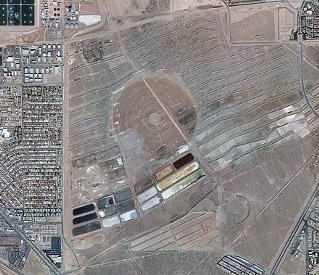BMI Complex Re-Development Project
Nevada Department of environmental protection
In 1941, the U.S. Government deeded approximately 5000 acres of vacant desert in the southeastern part of the Las Vegas Valley that would become the site of the world's largest magnesium plant—a plant that played a critical role in the World War II effort. Following the war, portions of the plant and adjacent land were leased to various industrial, government, and business entities primarily involved in the production of chemicals and products containing chemicals.
During the ensuing years, operations at these plants produced a variety of industrial and municipal effluents that were historically disposed of on-site in unlined evaporation ponds, transported off-site via ditches, or disposed of on the land surface. These disposal practices were industry-standard and legal at the time. Some of the wastes migrated into the Las Vegas Wash, a waterway that flows into Lake Mead, a primary source of drinking water for southern Nevada and millions of downstream users. Current waste disposal practices are consistent with all local, state, and federal guidelines and regulations.
Neptune's role in the Black Mountain Incorporated (BMI) Complex focuses on:
Drafting technical guidance for a variety of issues, including issues related to environmental statistics, asbestos risk, radiochemistry, detection limits, data usability, data validation, secular equilibrium, and vapor intrusion.
Technical document review of sampling and analysis plans, conceptual site models, methodology reports, risk assessments, and other technical memoranda.
Providing statistical guidance and technical expertise.
Risk assessment (human health and ecological).
Asbestos risk assessment guidance and sampling design.
Sitewide database development and integration with Guided Interactive Statistical Decision Tools (GiSdT).


